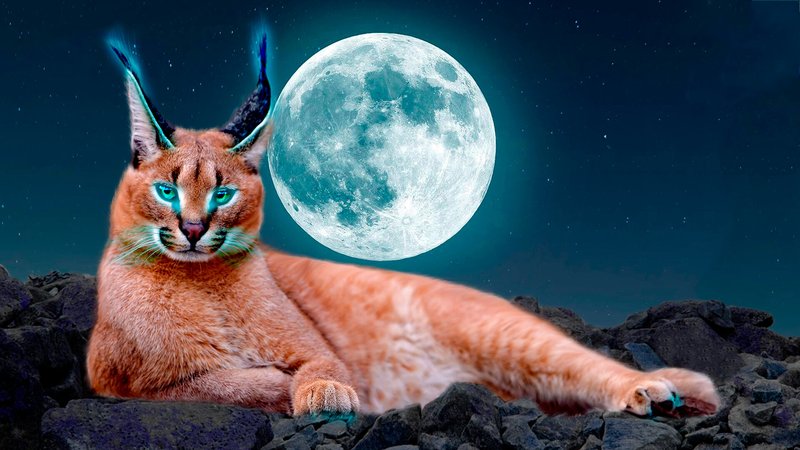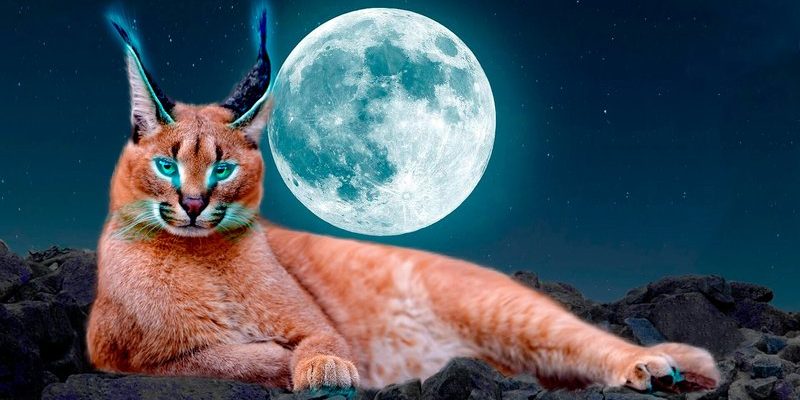
Let’s dive into some of these common myths together, like an enthusiastic conversation over coffee. You might be surprised by what you learn about this incredible animal. From their habitat to their hunting abilities, the caracal has a lot more going on than many people realize.
Myth 1: Caracals Are Just Big Domestic Cats
You might hear people say that caracals are simply oversized house cats. Honestly, that couldn’t be further from the truth! While they share some traits with our feline friends at home, caracals are *wild animals* with unique characteristics that set them apart.
First and foremost, caracals are built for life in the wild. They can weigh between 20 to 40 pounds and have long, muscular legs that help them leap high into the air to catch birds. This isn’t just a perk—it’s a crucial survival skill! They have distinctive tufted ears that help them hear the slightest rustle of potential prey, making them expert hunters.
So, while you may admire the sleekness of a domestic cat, picture the caracal as a whole different beast—one that thrives in harsh environments and exhibits wild instincts, unlike your cuddly pet at home.
Myth 2: Caracals are Dangerous to Humans
You might be concerned about the safety of being around a caracal, but here’s the thing: They are generally not a threat to humans. Unlike large predators like lions or tigers, caracals tend to be shy and elusive. They prefer to avoid human interaction and will often flee from any perceived threat.
In fact, most incidents involving caracals occur when they feel cornered or threatened. They’re more likely to climb a tree or hide than to attack. It’s important to respect them as wild animals, but you don’t have to live in fear of encountering one in the wild.
That said, it is crucial to remember that any wild animal can act unpredictably if they feel scared or provoked. Just like you wouldn’t approach a raccoon rummaging through your trash, it’s wise to keep your distance from a caracal if you ever spot one.
Myth 3: Caracals Only Live in Africa
If you believe caracals only roam the vast savannas of Africa, you’re missing some important facts. While it’s true that a significant population lives in Africa, these wild cats also inhabit parts of the Middle East, Central Asia, and even India.
The caracal has adapted to a variety of environments, from rocky hillsides to open grasslands. This versatility is key to their survival. They thrive in areas where they can find plenty of prey. Their cunning nature allows them to hunt effectively, regardless of the landscape.
So next time you think of a caracal, remember they’re a global cat. Their ability to adapt is one of the reasons they’re so fascinating!
Myth 4: Caracals Are Not Good Hunters
You might be wondering how a cat with such grace could be anything but an excellent hunter. Contrary to this myth, caracals are renowned for their impressive hunting skills. They can jump up to 10 feet in the air to catch birds in flight or pounce on small mammals with remarkable precision.
What’s fascinating is their unique hunting technique. Caracals often use their excellent eyesight and hearing to locate prey, then launch themselves into action, making split-second decisions that showcase their agility. It’s like watching a perfectly choreographed performance in nature.
Their success rate is quite high, and they mostly feed on rodents, birds, and even small antelope. So when it comes to hunting prowess, caracals have what it takes to survive in the wild.
Myth 5: Caracals Can Be Domesticated
You may have heard about exotic pets, which might lead you to think that caracals could make good companions. Allow me to explain why that’s not the best idea. Despite their captivating appearance, caracals are *wild animals*, and their instincts are honed for survival, not for snuggling up on your couch.
Unlike domesticated breeds, caracals have not undergone the selective breeding process that creates traits suitable for life with humans. They require vast territories to roam and hunt, which domestic settings simply can’t provide.
Some people might argue that owning a caracal is exotic or prestigious, but it often ends in frustration for both the owner and the cat. Wild animals need freedom, not a confined space to live. Instead of seeking to domesticate a caracal, admire and respect them in their natural habitat.
Myth 6: Caracals Are Endangered
Another misconception is that caracals are on the brink of extinction. The truth is a bit more nuanced. While they do face threats from habitat loss and hunting in some areas, caracals are currently classified as a species of “Least Concern” by the International Union for Conservation of Nature (IUCN).
Their adaptable nature allows them to thrive in various environments, which is a plus for their population numbers. However, it’s essential to recognize that local populations may be at risk, especially in areas where human encroachment is severe.
Conservation efforts are crucial in ensuring that caracals continue to roam the wild, but they aren’t facing immediate extinction like some other big cats. Keeping their habitat safe is a shared responsibility!
Myth 7: Caracals Are Solitary Creatures
While caracals are often viewed as solitary animals, they’re not as loners as it might seem. Here’s the thing: they can be social, especially during breeding season or when raising their young. Females are known to care for their kittens together, creating a temporary bond that helps ensure the survival of their offspring.
Adult male caracals may defend their territory but can also share it with other males. Their social structure is more complex than the typical image of a solitary wild cat. They communicate through vocalizations, scent markings, and even body language, helping them navigate their relationships in the wild.
So, while they do appreciate their alone time, caracals can exhibit social behavior that surprises many.
Wrapping Up the Myths
Caracals are captivating creatures wrapped in a veil of myths and misunderstandings. From their hunting prowess to their social behavior, there’s so much more to these wild cats than meets the eye. Whether you’re learning about them for the first time or revisiting facts, remember that the beauty of the caracal lies in its wild nature.
Instead of accepting myths, let’s celebrate these amazing animals by spreading awareness about their true characteristics, roles in the ecosystem, and the challenges they face. The more we know, the better we can help protect these incredible creatures for future generations. So next time you hear a myth about caracals, you’ll be ready to set the record straight!

